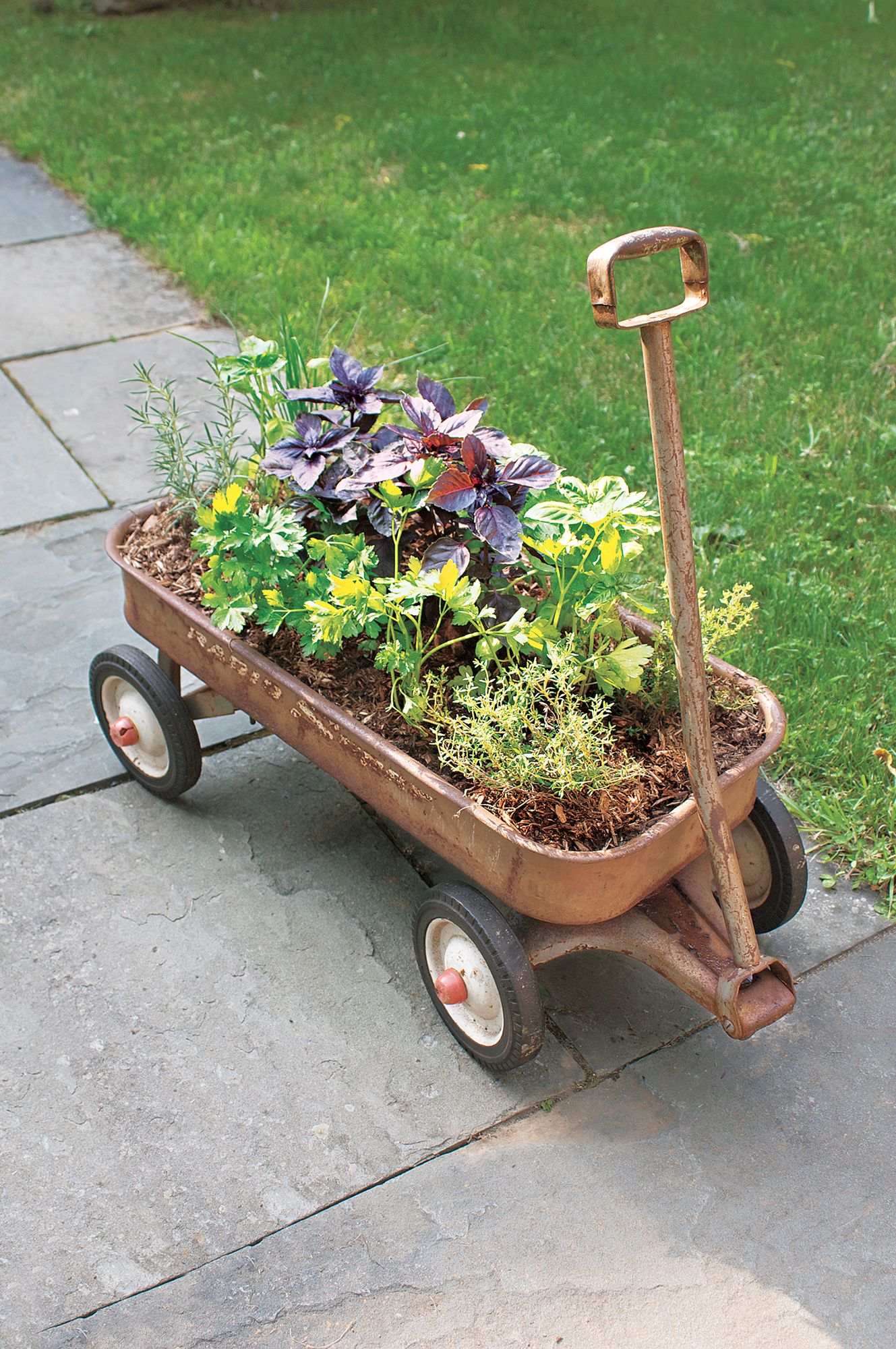An old wagon can become a stylish herb planter with just a little bit of effort and DIY chops. In this guide, we’ll provide step-by-step instructions on creating a mobile herb planter in under an hour. Most of the time will be spent drilling the drainage holes and preparing the wagon, making it an ideal weekend project.
The cost can vary depending on whether you already have a wagon and the types of herbs you choose. Check thrift stores or yard sales for a budget-friendly wagon. Additional costs will include soil, herbs, and any necessary tools, but using materials you already have can help keep expenses low.
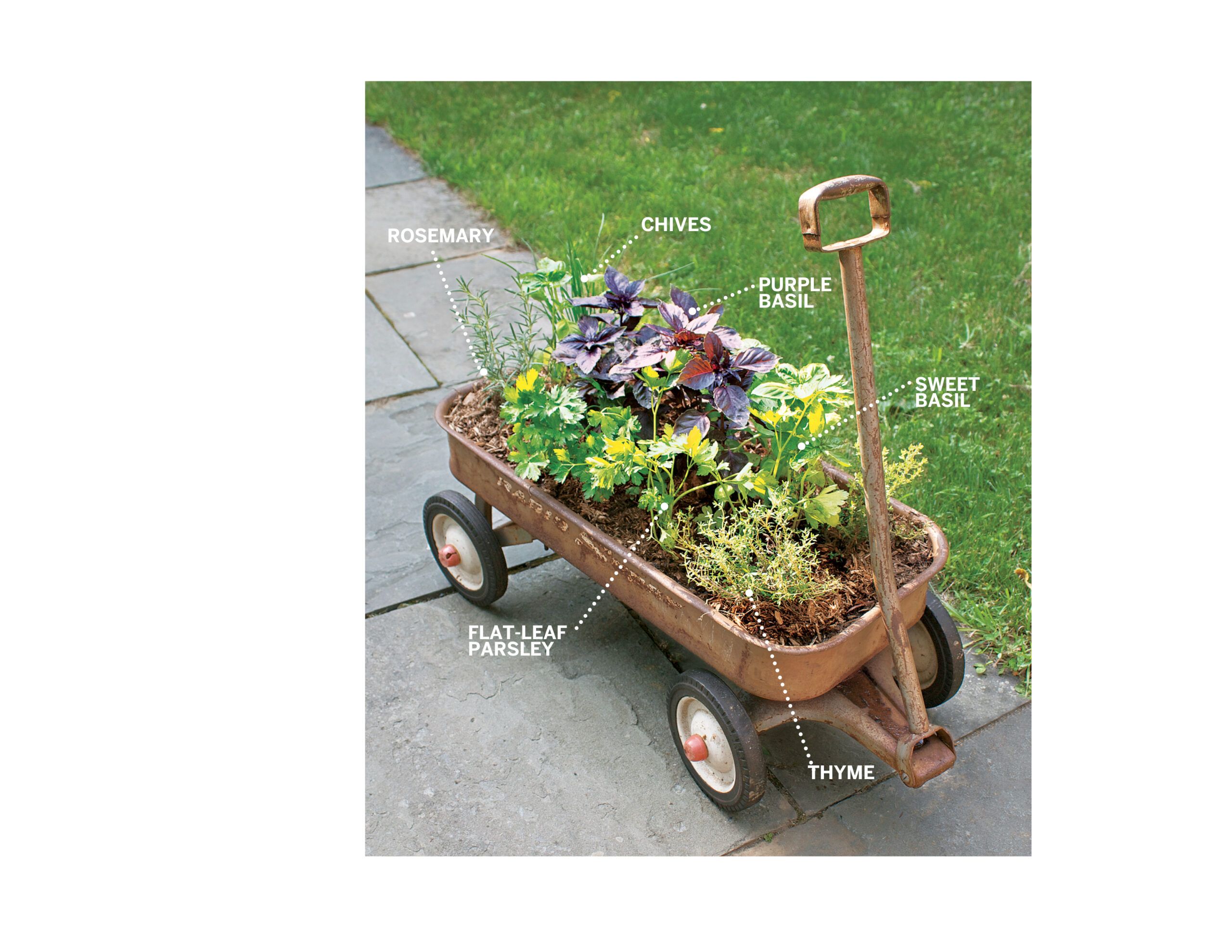
Tools and Materials You’ll Need
Below are the tools and materials needed for your herb planter project. You’ll, of course, also need an old wagon and the herbs you want to plant.
- 1/4-inch high-speed steel bit
- Drill
- Hammer
- Nailset
- Safety goggles
- Sandpaper
- Scissors
- Trowel
- Watering can or hose
- Work gloves
- Clean, washed gravel
- High-quality potting soil
- Landscape fabric (optional)
- Rust-resistant treatment (optional)
Step-by-Step Herb Planter Wagon Guide
Use the instructions below to assemble your herb planter wagon. When you’re done building it, you’ll be ready to plant your herbs.
Step 1: Drill Drainage Holes
Drainage holes will allow water to seep out of the garden, preventing root rot and other issues.
- Begin by making small divots in the bottom of the wagon using a nailset and hammer. These divots will guide your drill and prevent the bit from slipping.
- Use the divots as starting points to drill through the metal with a ¼-inch high-speed steel bit. To protect yourself, wear safety goggles and work gloves during this process.
- Space the holes evenly across the bottom of the wagon, aiming for about one hole every 4-6 inches.
- After drilling, smooth any rough edges around the holes with sandpaper to prevent injury and rust formation.
- To extend the life of your planter, add a rust-resistant treatment to the bottom of the wagon, particularly around the drilled holes.
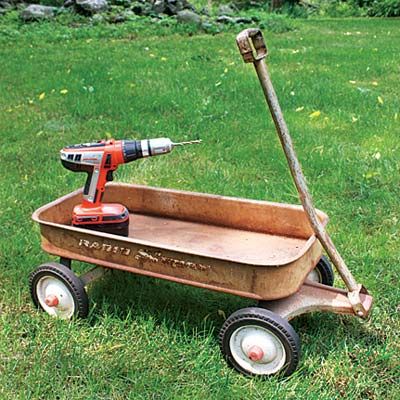
Step 2: Line With Gravel
Clean the inside of the wagon thoroughly, removing dirt or debris. Then:
- Spread a 1-inch layer of gravel evenly across the bottom of the wagon. Use clean, washed gravel to avoid contaminating your herb garden.
- Consider placing a layer of landscape fabric over the gravel before adding soil. This will further prevent soil from washing through the drainage holes while allowing water to pass through. Using a landscape fabric also helps keep the soil structure intact.
- Gently tamp down the gravel layer to create a stable base for your soil and plants.
- Check the drainage by pouring water over the gravel to verify it flows freely through the holes, adjusting as needed before adding soil.
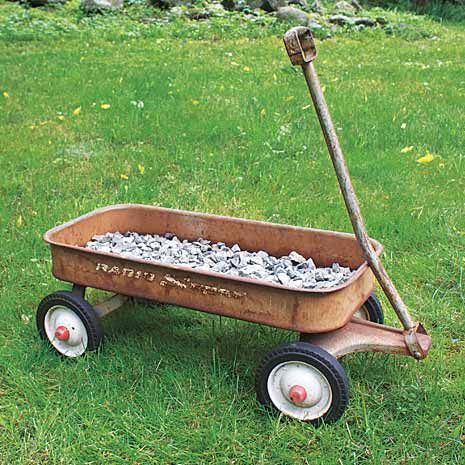
Step 3: Plant the Herbs
Fill the wagon with high-quality potting soil, stopping about 1 inch below the wagon’s lip. This space will allow room for watering without overflow and help prevent soil erosion.
When arranging your herbs in the wagon, take into account their mature sizes and growth habits. Place taller herbs towards the back or center, and position shorter or trailing varieties near the edges. To plant them properly:
- Gently remove each herb from its nursery pot and loosen the root ball before planting. This encourages roots to spread into the new soil, improving their ability to take up nutrients and water.
- Plant each herb at the same depth it grew in its original container.
- Once all herbs are planted, add a layer of mulch to help retain moisture and suppress weed growth. Use natural mulch like straw or bark chips, which also decompose and enrich the soil over time.
- Water the newly planted herbs thoroughly, allowing excess water to drain through the holes you created.
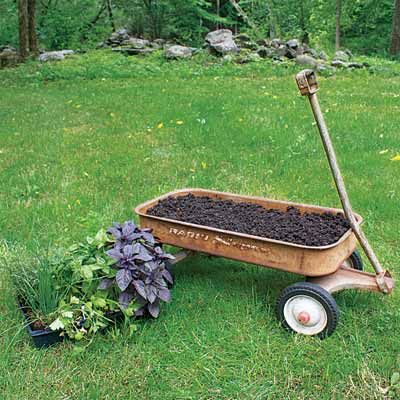
Choosing the Right Herb Varieties
When choosing herbs for your wagon planter, consider their culinary uses and visual appeal. Easy-to-grow varieties like basil, thyme, parsley, rosemary, and chives are ideal, as they share similar water and sunlight needs.
Mix herbs with different leaf textures and colors for a dynamic display. For example, combine broad-leaved basil with delicate dill and silvery sage. Adding edible flowers such as nasturtium or marigold can enhance the planter’s color and offer additional culinary benefits.
Choose herbs with similar water and sun requirements to guarantee all plants in the wagon receive appropriate care. Some great combinations include the following options:
- Culinary favorites: Basil, parsley, cilantro, and chives are versatile for cooking and grow well together.
- Mediterranean herbs: Rosemary, thyme, oregano, and sage thrive in similar conditions and enhance a classic herb garden look.
- Tea garden: Mint, lemon balm, chamomile, and lavender offer a fragrant and relaxing blend for tea enthusiasts.
Troubleshooting Common Planter Issues
Follow these tips to address common problems after creating your wagon planter.
- Drainage problems: If you notice water pooling in the wagon, ensure the drainage holes are not clogged and the gravel layer is properly installed.
- Herb growth issues: If herbs are not thriving, check for adequate sunlight and adjust watering practices. Over or under-watering can both affect plant health.
- Pest control: Check your herbs frequently for signs of pests such as discolored or damaged leaves. Use natural remedies like insecticidal soap or neem oil to treat infestations early.
- Soil quality: If the soil seems to be compacting or draining poorly, consider adding organic matter to improve its structure and nutrient content.
Caring for Your Herb Wagon
Position your wagon in a sunny spot with at least six hours of direct sunlight daily. Most herbs prefer full sun, but some can tolerate partial shade. Adjust the location based on the seasonal sunlight changes, and Rotate your wagon periodically to make sure all sides of the plants receive equal sunlight exposure to prevent uneven growth.
Water your herbs regularly, but avoid overwatering. Check the soil moisture by inserting your finger about an inch into the soil. If it feels dry, it’s time to water.
Fertilize your herbs every four to six weeks with a balanced, water-soluble fertilizer diluted to half strength, and harvest herbs regularly to encourage bushier growth and prevent flowering, which can alter the flavor of the leaves.
In colder climates, move your herb wagon indoors or to a protected area during winter months to extend the growing season. This step also protects perennials from frost damage. Check your herbs regularly for pests and diseases and treat them at the first signs of trouble.
